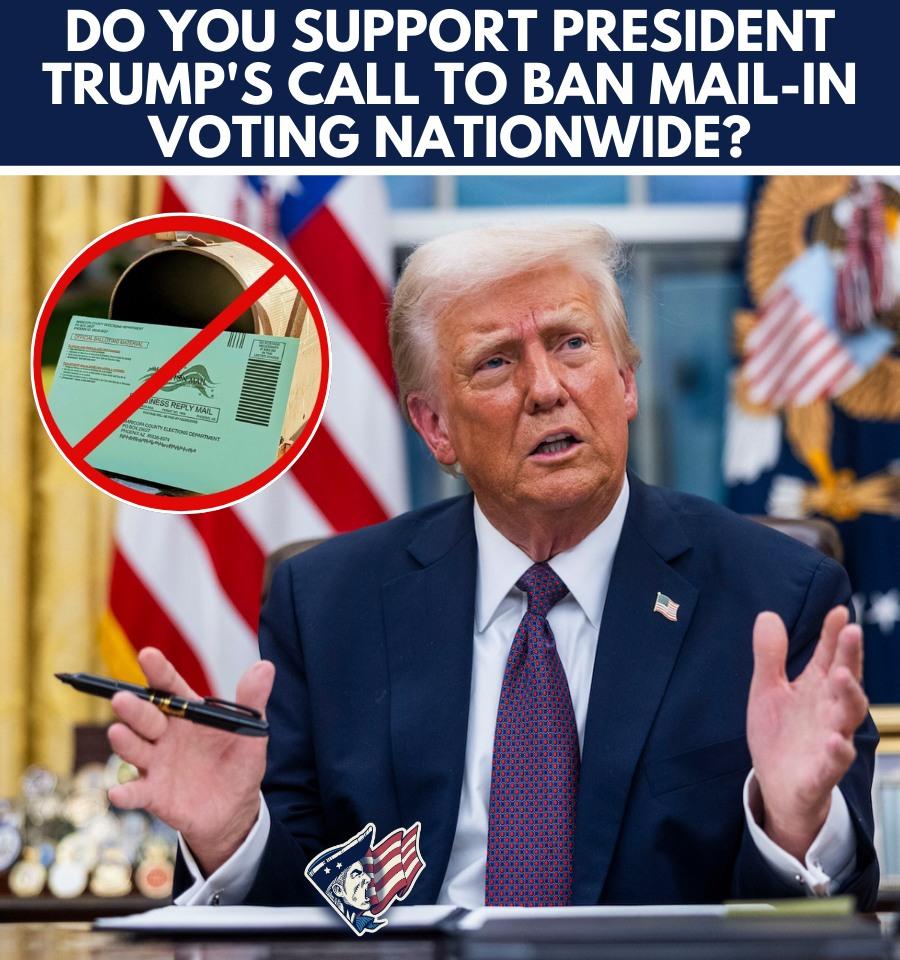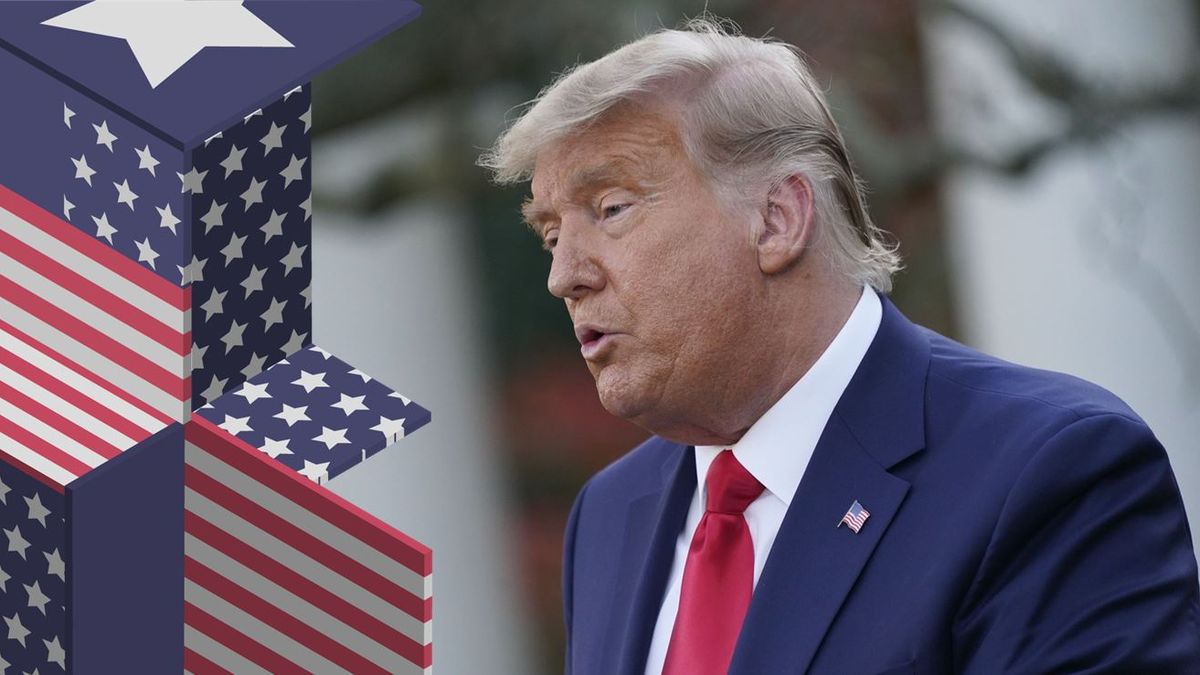In a move that has sent shockwaves across the political landscape, President Donald Trump has reignited his crusade against mail-in voting, vowing to sign an executive order to ban it nationwide before the 2026 midterm elections. “Mail-in ballots are corrupt; you can never have a real democracy with them!” Trump declared during a recent White House meeting, leaving jaws on the floor and social media in a frenzy. But is this a bold step to secure elections or a dangerous power grab that threatens the very foundation of American voting rights? Buckle up—this is about to get wild.

Trump’s latest push comes after a controversial meeting with Russian President Vladimir Putin, who reportedly told him that mail-in voting makes elections “dishonest.” The former president doubled down on Truth Social, claiming, “We are the only country in the world that uses mail-in voting!”—a statement that’s not just bold but flat-out wrong. Data from the International Institute for Democracy and Electoral Assistance shows that at least 34 countries, including Canada, Germany, and Australia, allow some form of mail-in voting. Yet, Trump’s fiery rhetoric has already sparked a wildfire of debate, with supporters cheering his “fight for election integrity” and critics warning of an unprecedented assault on voter access.
Let’s break it down. Mail-in voting has been a cornerstone of American elections since the Civil War, with nearly 30% of ballots cast by mail in the 2024 election, according to the U.S. Election Assistance Commission. States like Oregon, Washington, and Utah have relied on it for decades, with safeguards like ballot tracking and signature verification keeping fraud at bay. Experts, including David Becker from the Center for Election Innovation & Research, insist that voter fraud is “exceedingly rare” and has never swayed an election’s outcome. So why is Trump so obsessed with banning it? Some say it’s because Democrats have historically used mail-in voting more than Republicans, giving them an edge in turnout. Trump himself hinted at this, claiming, “It’s the only way Democrats can get elected!”—a statement that conveniently ignores how his own party leaned heavily on mail ballots to secure his 2024 victory.
The legal reality is where things get murky. The U.S. Constitution explicitly grants states, not the president, the power to regulate elections. Article I, Section 4 makes it clear: only state legislatures and Congress can set the “times, places, and manner” of voting. Legal scholars like UCLA’s Richard Hasen and Northeastern’s Jeremy Paul have called Trump’s plan “legally baseless” and predict swift court challenges if he tries to push an executive order through. In fact, a federal judge already blocked parts of a similar Trump order in June 2025 that tried to restrict mail-in ballot counting. “The president plays literally no role in elections,” Becker told PBS, emphasizing that the Founding Fathers designed it that way to prevent executive overreach.
But here’s where it gets juicy: Trump’s not just targeting mail-in voting. He’s also gunning for voting machines, claiming they’re “highly inaccurate” and pushing for hand-counted paper ballots. Ohio’s Republican Secretary of State Frank LaRose, no stranger to election security, called this a terrible idea, pointing out that machines with paper trails are faster and more accurate than hand-counting. Research backs him up—hand-counting is prone to human error and costs a fortune. Yet, Trump’s base is eating it up, flooding Threads with hashtags like #BanTheBallotScam and #SaveOurElections, while critics counter with #VoterSuppression and #DemocracyUnderAttack. The internet is a battleground, and this fight is only heating up.
On the flip side, Trump’s supporters argue he’s onto something. They point to isolated incidents—like a 2020 case in Pennsylvania where a few ballots were mishandled—as proof that mail-in voting is a ticking time bomb. Ohio Representative Beth Lear recently told WVXU she believes mail-in voting makes it harder to verify voter identity, even though there’s no evidence of widespread issues. Trump’s camp also claims that states like California and New York have “lax” voting laws that invite fraud, a charge that White House spokesperson Harrison Fields echoed to CBS News. But here’s the kicker: even Trump voted by mail in past elections, and his 2024 campaign encouraged Republicans to “bank their votes early” through mail ballots. Talk about a plot twist!
So, what’s the real game here? Some analysts, like those at CNN, call this Trump’s “most sinister” move yet, suggesting he’s laying the groundwork to discredit the 2026 midterms if Republicans lose seats. Others, like the Institute for Responsive Government, argue it’s a desperate bid to control a decentralized election system that’s deliberately out of his reach. Either way, the logistics of banning mail-in voting are a nightmare. States like Oregon, where every voter gets a mail ballot, would need to overhaul their entire systems in less than a year—a move that Secretary of State Tobias Read called “an attack on democracy.” And with 80% of Arizona voters relying on mail ballots, as noted by Secretary of State Adrian Fontes, a ban could disenfranchise millions, especially rural voters, the elderly, and those with disabilities.
The social media storm is already raging. Threads is buzzing with memes, hot takes, and conspiracy theories, from claims that Trump’s plan will “save America” to warnings that it’s a step toward authoritarianism. One viral post read, “No mail-in voting? Guess I’ll just teleport to the polls!”—racking up thousands of likes. The controversy is a goldmine for engagement, with users on both sides itching to click and argue. Whether Trump’s executive order sees the light of day or gets shot down in court, one thing’s certain: this debate is far from over, and it’s got everyone talking.






